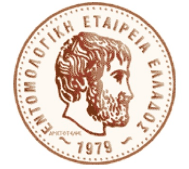Ο υπονομευτής φΰλλων της Ν. Αμερικής Liriomyza huidobrensis (Blanchard) επισημάνθηκε για πρώτη φορά το 1992 σε θερμοκηπιακές και υπαίθριες καλλιέργειες κηπευτικων και ανθέων στη Κρήτη και σε δείγμα φΰλλων πεπονιάςαπό τον Πύργο (Πελοπόννησος) και φΰλλων πατάτας από τη Χαλκίδα (Εΰβοια). Το έντομο αυτό προκάλεσε σοβαρές ζημιές στις φασολιές, κουκιά, μαροΰλια, πεπόνια και αγγουριές ενώ προσέβαλε επίσης σε μικρότερο βαθμό πατατόφυτα, κρεμμΰδια, αγγινάρες και σπανάκι. Σήμερα αποτελεί το επικρατέστερο είδος υπονομευτή και εξαπλώθηκε σε όλη την Κρήτη. Αντιμετωπίζεται δύσκολα με τα συνήθως χρησιμοποιούμενα εντομοκτόνα για τους άλλους υπονομευτές. Η αντιμετώπιση του μπορεί να γίνει μόνο από ένα πολΰ περιορισμένο αριθμό εντομοκτόνων (abamcctin, triazophos, imidacloprid, hcptcnophos κλπ.). Τα υμενόπτερα παράσιτα Diglyphus isaea (Walter) και Dacnusa sibirica Telenga υπάρχουν ως ιθαγενή στην πανίδα της Κρήτης και ελέγχουν αποτελεσματικάτον νέο αυτό υπονομευτή.
(EL)
In mid autumn 1992 the South American leaf-miner Liriomyza huidobrensis (Blanchard) was firstly recorded on greenhouse cucumbers, melons, beans and outdoor beans, broad beans and lettuce in the following locations of Crete: 1) Mires, Tymbaki, Antiskari at Messara valley of Southern Crete 2) Filissia in the midland and 3) Platanias and Kokini Chani in Northern Crete. The following year L. huidobrensis had spread all over Crete (Ierapetra, Stomion, Koutsoura, Chania etc.) while melon and potato leaves which were sent to our laboratory from mainland Greece, Pirgos (Peloponissos) and Chalkida (Evia island), were found heavily damaged by the same leafmincr. The different types of mines (it usually mines the leaf alongside the veins), the colour of pupae (blackish) and the sudden attack of some plants (lettuce, broad beans, onions) which have never been damaged by the known local leafminers as yet, indicated that it was a newly introduced species. The new leafminer alerted the growers due to the high crop losses on outdoor and greenhouse vegetables (lettuce, broad beans, beans etc) despite the frequent application of registered insecticides. In the following year an extensive survey started to investigate its distribution and host plant in the greenhouses and outdoor vegetables and ornamentals in Crete. L. huidobrensis, a quarantine insect, is a polyphagous leafminer distributed in most biogeographical regions. It is native in South American countries from which it was spread soon in North America, Asia and Europe. In Europe it was first noticed in Holland, England and France in 1989 causing considerable damage to vegetables and ornamentals. It mines the spongy mesophyll reducing the photosynthesis more than the other leafminers. This type of mines is not easily visible, unless the leaf is observed through transmitted sunlight or artificial light. This method was applied to ensure accurate detection of larvae and their parasitoids under a stereoscope. In our observations we found mines in leaves and cucumber fruits as well. Studies of its life cycle on greenhouse beans and melons revealed that most pupae (98%) remain on the bean leaves outside a hole in the autumn, while a few fall on the ground. The number of pupae collected from ten leaves per 24h was: 5.7±1.6 on lettuce, 17.07±4.1 on beans, 24.2±7.3 on melon, 6.0±2 on broad bean leaves. During the survey the following host plants were recorded: Chemical control could be effective by applying certain insecticides (abamectin, triazophos, imidacloprid, heptenophos etc.) while biological control seems to be rather effective by the known parasitoids, which are already used against the tomato leafminer Liriomyza bryoniae Kalt. Biological control of L. huidobrensis was effective on lettuce by means of repeated releases of Dacnusa sibirica Telenga and Diglyphus isaea (Walker) but so far native parasitoids proved to be able to control the pest. Mass trapping with coloured sticky traps seems to be also a potential method in IPM programmes. The mortality of pupae collected from heavily treated greenhouse plants with insecticides varied from 65 to 74% while that of untreated plants was between 18-25%. No pupal parasitoids were recorded but D. isaea and D. sibirica were both recorded as larval parasitoids. D. isaea was abundant all over the year while D. sibirica only in spring-summer period. These two parasitoids were able, in certain cases, to control sufficiently the leaf miner in untreated greenhouse cucumber and bean plants. The neem seed extract (Azadirachta indica) applied on outdoor tomatoes in Antiskari (Southern Crete) proved harmless both on hymenoptera and on the mirid predator Macrolophus caliginogus Wagner. Despite its weak larvicide action on L. huidobrensis it was very effective in conjuction with parasitoids consisting of a promising candidate in IPM programmes.
(EN)

